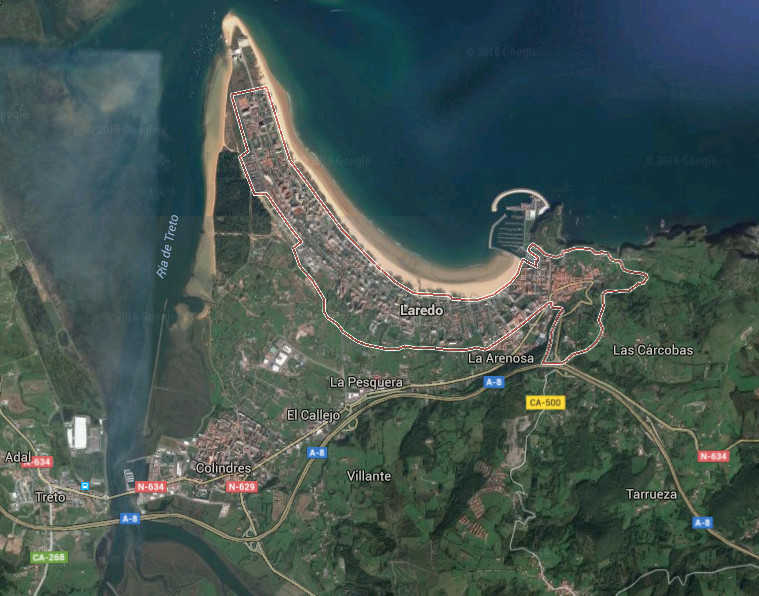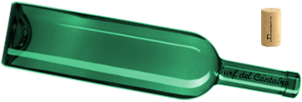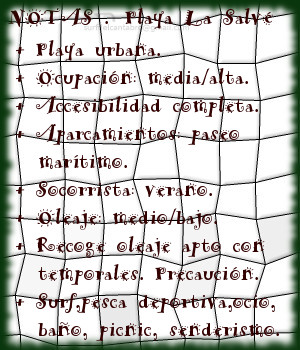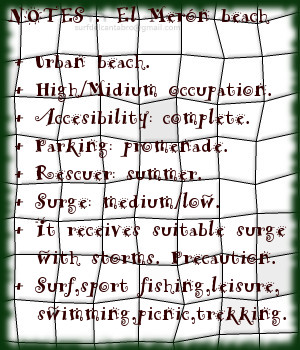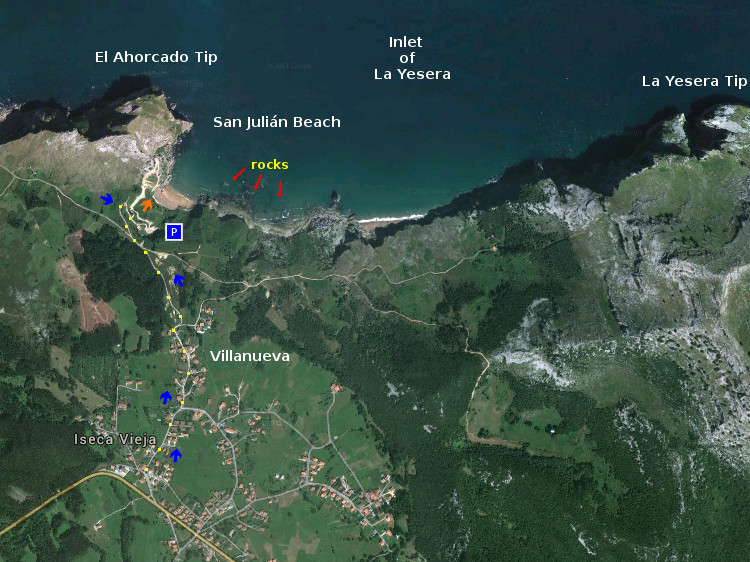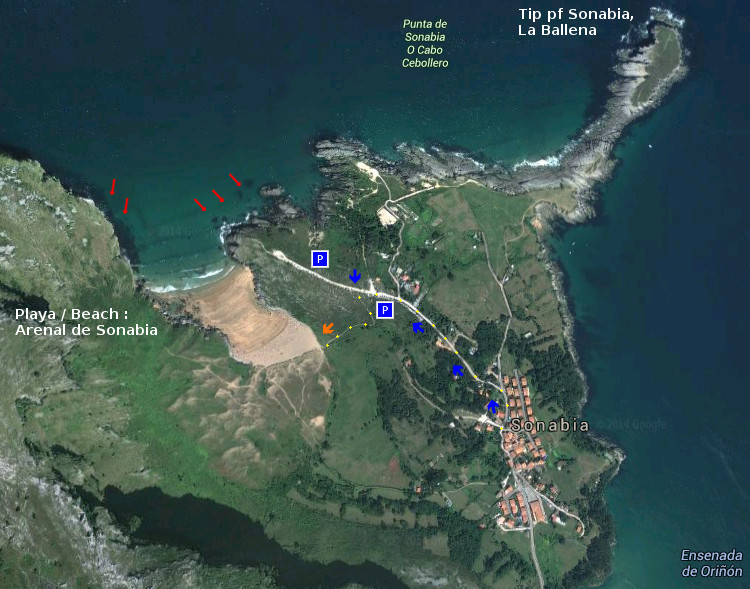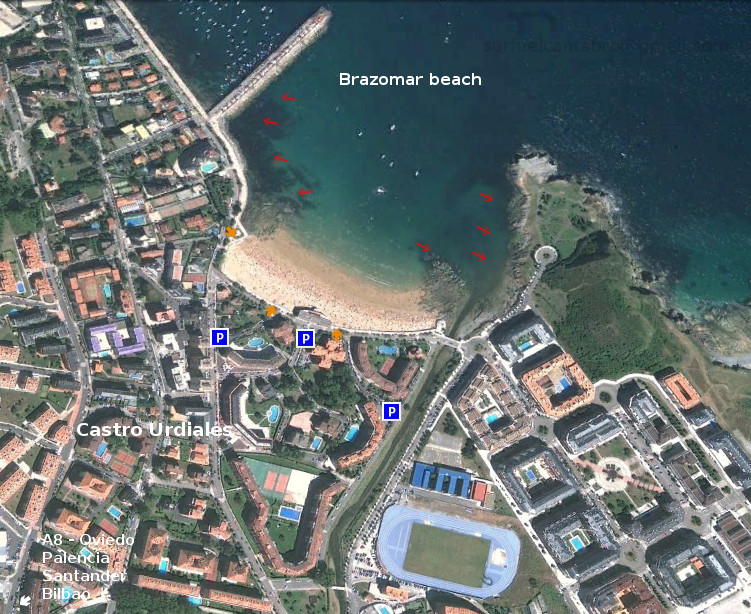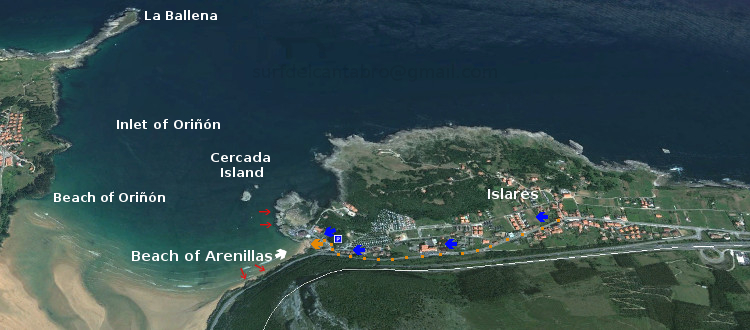Playa de La Salvé, ruta
![]() La playa de La Salvé, situada en Laredo, es la playa más larga de Cantabria. Su longitud de 4250 metros y anchura media de 120 metros habilitan un extenso área cuya forma curvada acota parte de la localidad y su unión con el Mar Cantábrico. El recorrido es acompañado por un Paseo Marítimo que se prolonga hasta el Puntal, lengua de arena que delimita la entrada a la Bahía de Santoña en uno de sus extremos.
La playa de La Salvé, situada en Laredo, es la playa más larga de Cantabria. Su longitud de 4250 metros y anchura media de 120 metros habilitan un extenso área cuya forma curvada acota parte de la localidad y su unión con el Mar Cantábrico. El recorrido es acompañado por un Paseo Marítimo que se prolonga hasta el Puntal, lengua de arena que delimita la entrada a la Bahía de Santoña en uno de sus extremos.
Empezaremos la ruta en el Parque de los Tres Pescadores, zona ajardinada próxima al puerto deportivo y localizado en el extremo Este del recorrido. Desde allí, podemos elegir entrar al arenal o caminar por el Paseo Marítimo. El principio del recorrido posee el tramo más curvado, por lo que la aparición de edificios y dunas irán descubriendo los encantos sencillos de un simple paseo. A medida que avancemos, los pasos sobre la arena acumularán un tonificado desgaste. Es aconsejable caminar cerca de la orilla, donde la arena que abandonó el agua por las mareas permanece más dura y facilita el camino. Tras el comienzo, una recta alargada aparece. Acompañados por el sonido aleatorio y orquestral del océano conseguiremos dejar atrás el bullicio urbano. La brisa, presente en la zona, endulzará el viaje y proyectará la imaginación que el entorno disparó. Cualquier punto del recorrido es adecuado para terminar nuestro paseo, acorde a la condición física de cada uno y el tiempo disponible.
El final del trayecto hará aparecer El Puntal de Laredo. Península arenosa y dunar que sirve de bisagra a la entrada de la Bahía de Santoña. Este punto único, emplazamiento privilegiado de su entorno, proporciona una visión panorámica de un espacio singular creado por la naturaleza a través del tiempo. En ese momento es aconsejable buscar un pequeño espacio a modo de silla, reposar y degustar el final del trayecto.
![]()
![]()
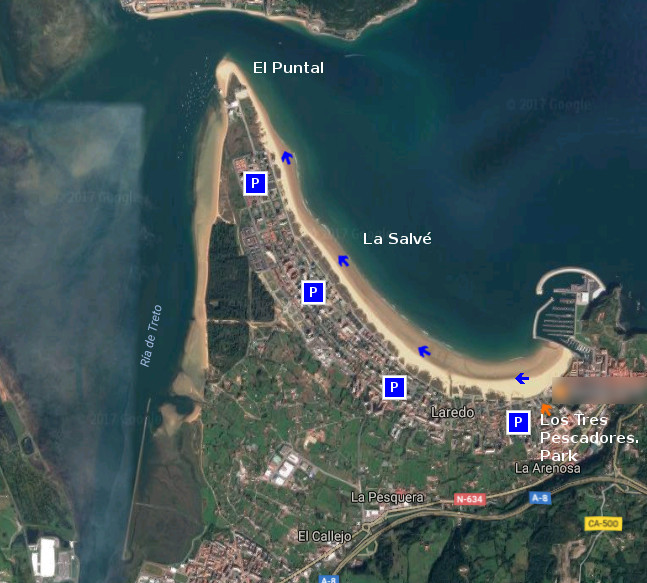
![]()
Beach La Salvé, route
![]() The beach of La Salvé, placed in Laredo, it is the longest beach of Cantabria. Its length of 4250 meters and average width of 120 meters enable an extensively area which curled form annotates part of the locality and its union with the Cantabrian Sea. The tour is accompanied by a Maritime Promenade that prolongs up to El Puntal, language of sand that delimits the entry to Bay of Santoña in one of its ends.
The beach of La Salvé, placed in Laredo, it is the longest beach of Cantabria. Its length of 4250 meters and average width of 120 meters enable an extensively area which curled form annotates part of the locality and its union with the Cantabrian Sea. The tour is accompanied by a Maritime Promenade that prolongs up to El Puntal, language of sand that delimits the entry to Bay of Santoña in one of its ends.
We will begin the route in Los Tres Pescadores Park , landscaped zone next the yachting port and located in the East extreme of the tour. From there, we can choose enter to the sandbank or walk along the seafront. The beginning of the journey possesses the most curled section, so the appearance of buildings and dunes will discover the easier captivations of a simple walk. As we advance, the steps on the sand will accumulate a strengthened wear. It is advisable to go near the shore, where the sand that left behind the water by the tides remains harder and facilitates the way. After the beginning, an elongated straight line appears. Accompanied by the random and orquestral sound of the ocean we will manage to leave behind the urban hustle. The breeze, present in the zone, will sweeten the trip and will project the imagination that the environment shot. Any point of the tour is adapted to finish our tour, chord to the physical condition of each one and the available time.
The end of the distance will make appear El Puntal of Laredo. Sandy and dune peninsula, that runs as a hinge, at the entry of Bay of Santoña. Thisunique point, privileged emplacement of its environment, provides a panoramic vision of a singular space created by the nature across the time. In this moment it is advisable to look for an small space as a chair, to rest and to taste the end of the distance.
![]()

